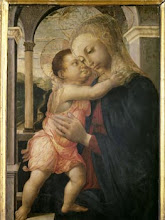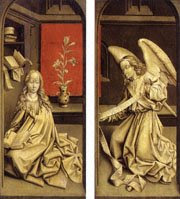
SALZILLO, Francisco
(b. 1707, Murcia, d. 1783, Murcia)
Biography
Salzillo (also spelled Zarcillo, Salsillo, or Salcillo), sculptor, a prolific creator of figures for the Holy Week procession. He is considered by some authorities to be the greatest sculptor in 18th-century Spain and by others as merely an excellent folk artist.
Growing up in provincial Murcia, he received his training from his father, a Neapolitan sculptor who had a studio that produced religious statues. He entered a Dominican monastery as a youth, but on the death of his father in 1727 he left to take charge of the family studio. Remaining in Murcia all his life, he produced an enormous number of polychrome religious figures with the assistance of his brothers and sister.
In Salzillo's work the sacred persons are highly humanized, appealing to the popular audience that demanded pathos and sentimental realism. Much of his best work is in the Salzillo Museum in Murcia.














































.jpg)


.jpg)











